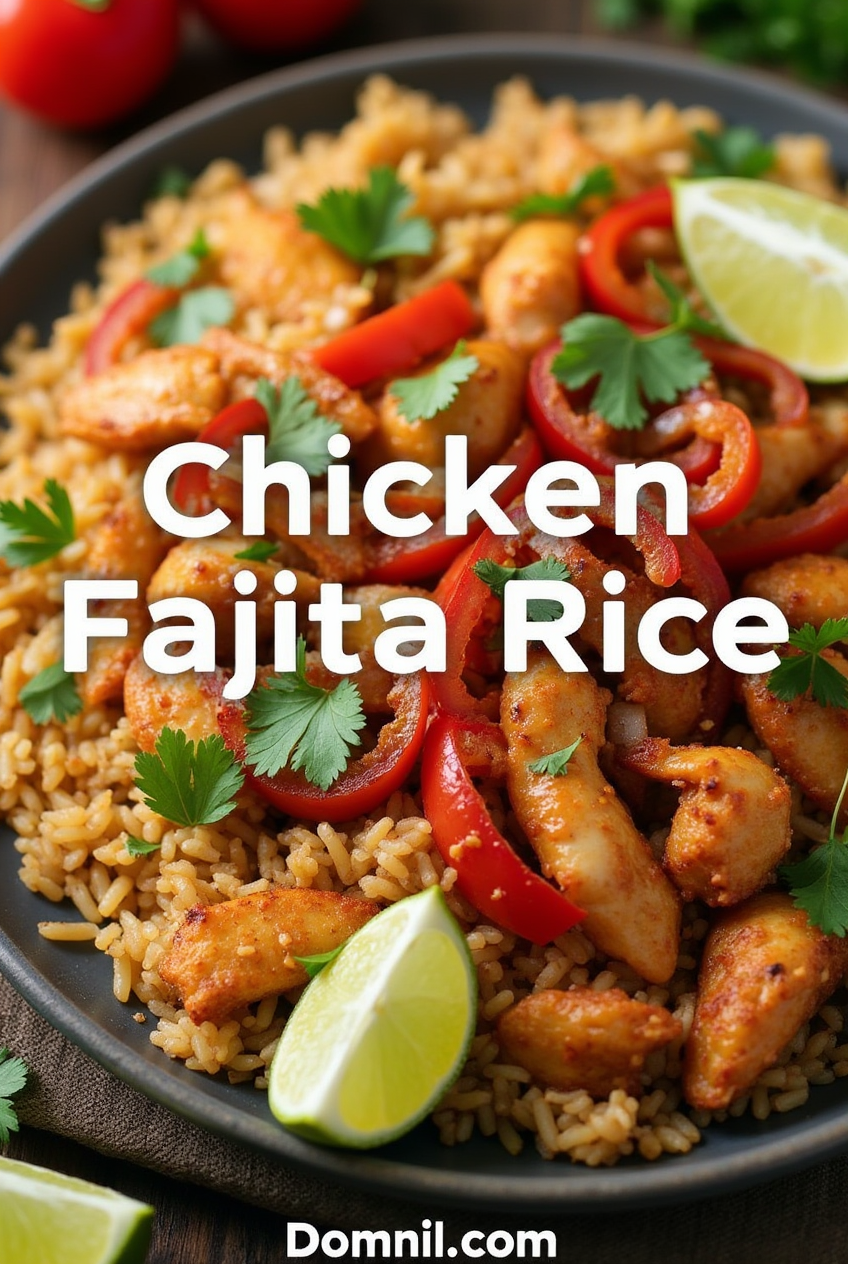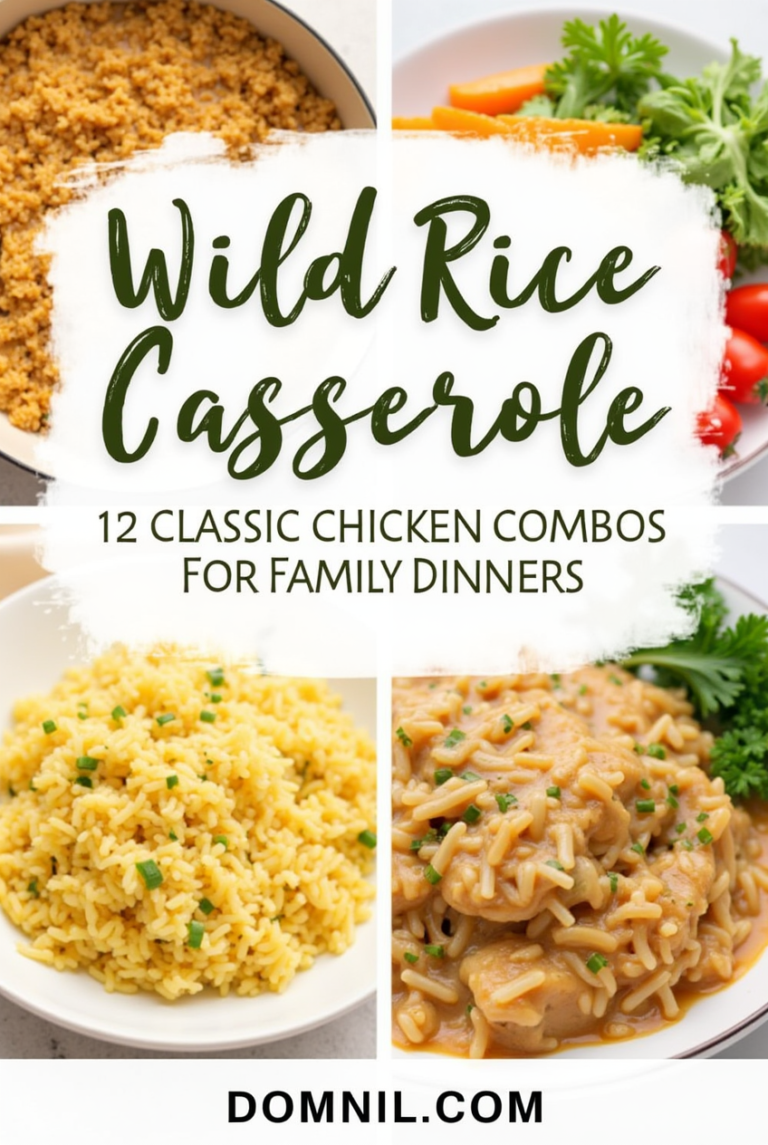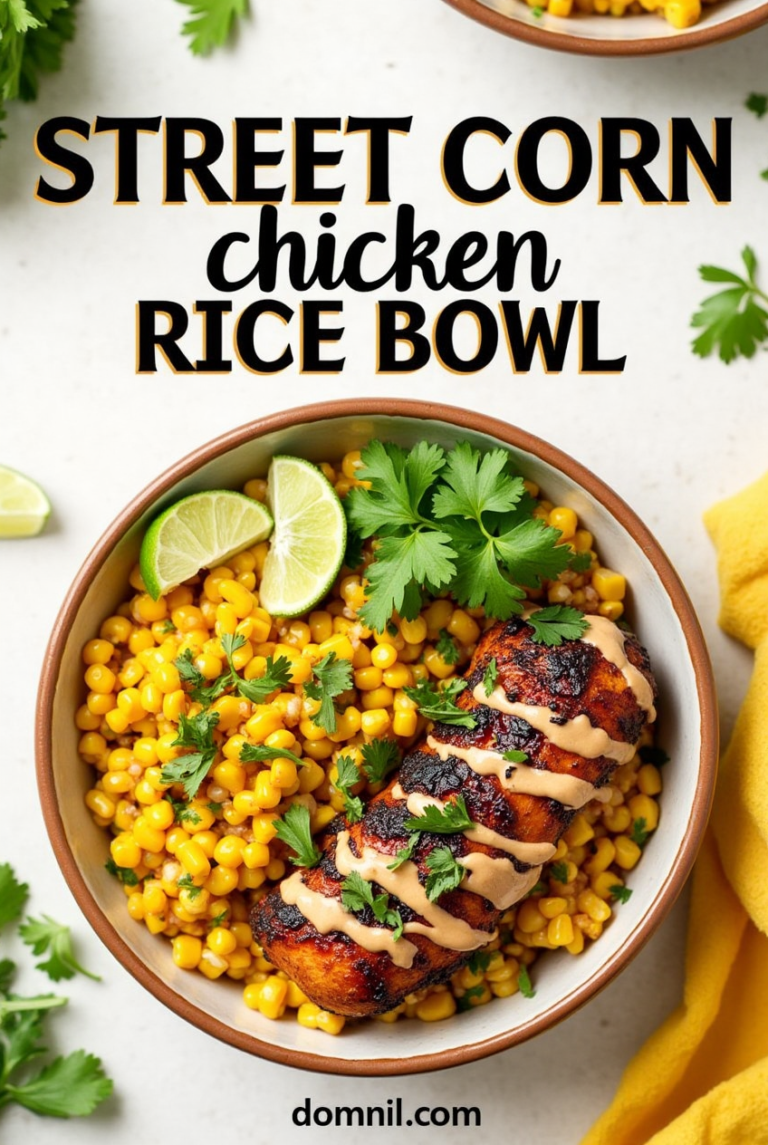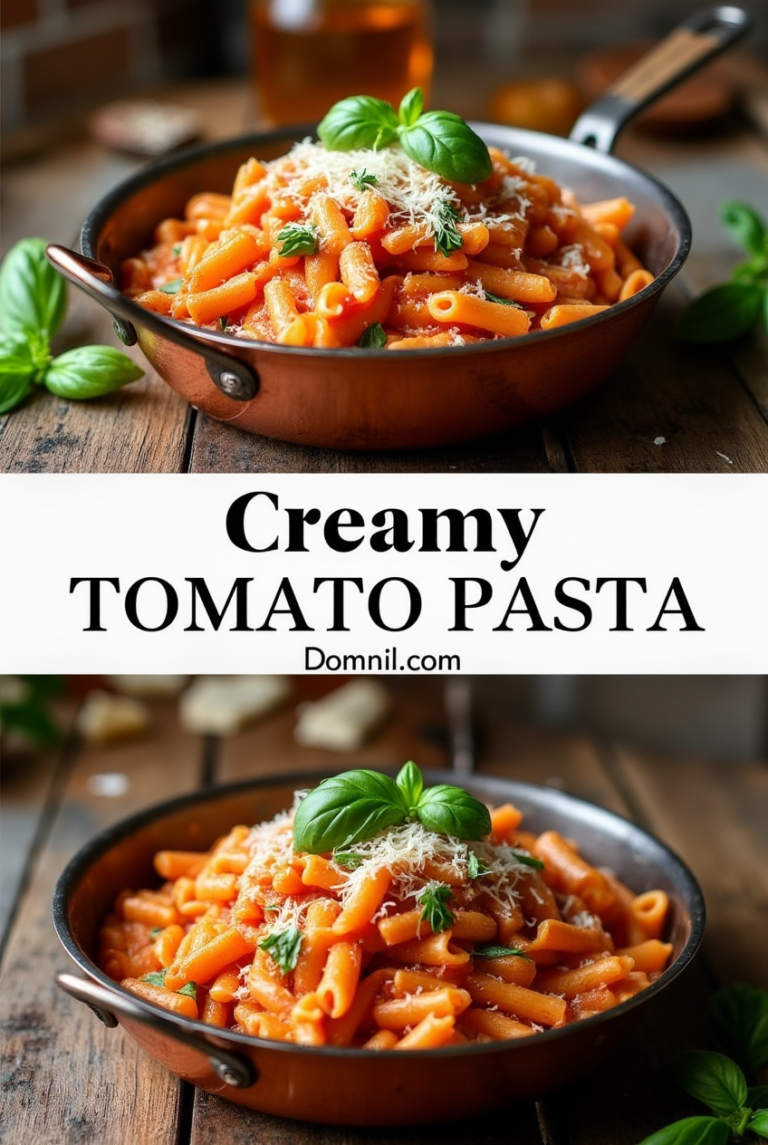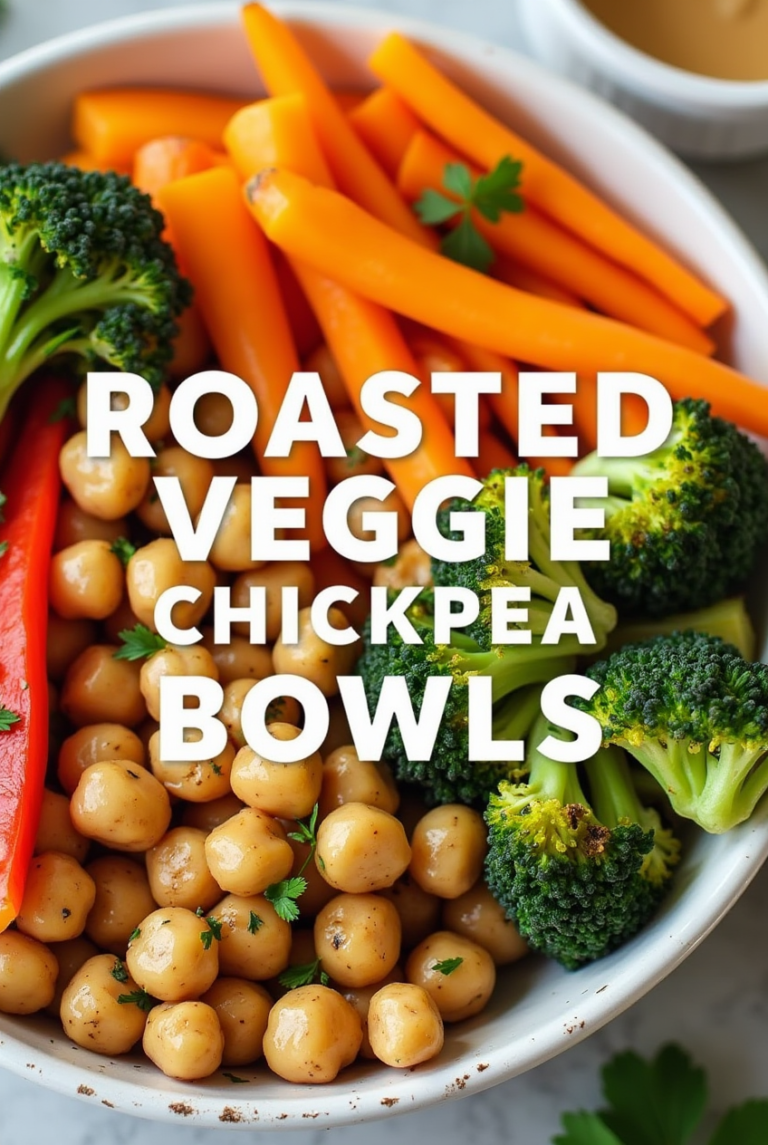Chicken Fajita Rice – The Ultimate One-Pan Wonder
Introduction to Chicken Fajita Rice
What is Chicken Fajita Rice?
Chicken Fajita Rice is like the love child of two all-time favorite dishes—sizzling fajitas and hearty rice bowls. This one-skillet wonder brings together tender, seasoned chicken strips, sautéed bell peppers, caramelized onions, and fluffy rice, all drenched in a fiesta of spices. It’s everything you love about a Mexican-style fajita platter, but with the comfort and convenience of a rice-based meal. Whether you’re in the mood for something spicy, savory, or simply satisfying, chicken fajita rice hits all the right notes.
The beauty of this dish lies in its simplicity. It’s quick enough for a weeknight dinner, impressive enough for guests, and customizable to fit your dietary needs. No tortillas needed, no extra sides—just a bowl full of flavor. Plus, it’s a hit with kids and adults alike, making it a go-to for families who want deliciousness without the drama.
Think of it as your no-fuss, high-reward dinner solution. And the best part? Everything cooks in one pan, which means fewer dishes and more time for chilling after dinner.
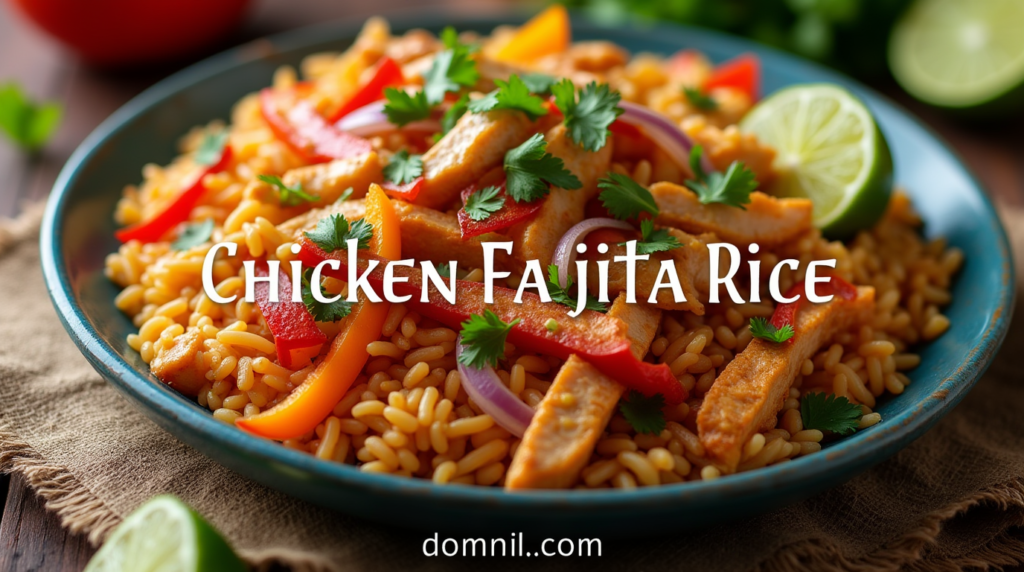
Table of Contents
Why Everyone Loves It
Chicken Fajita Rice is the perfect storm of flavors and textures. Imagine biting into juicy strips of marinated chicken, charred just enough to give that smoky edge. Then you get the sweetness from sautéed peppers and onions, followed by a burst of flavor from the seasoned rice that soaks up every bit of spice and savory juice. Hungry yet?
Beyond taste, it’s the ease that makes this dish shine. You don’t need to be a pro chef to nail this meal. It’s a one-pan recipe that requires basic ingredients you probably already have in your kitchen—no fancy sauces or rare spices. Just simple, bold ingredients doing their thing.
People also love how versatile it is. Want to keep it lean? Swap white rice for brown or cauliflower rice. Need to feed a crowd? Double the batch and you’re good to go. Looking for a freezer-friendly meal? Chicken fajita rice stores like a champ. It’s your culinary Swiss army knife—ready for any situation.
The Origins of Fajita-Inspired Dishes
A Brief History of Fajitas
The term “fajita” actually comes from the Spanish word “faja,” meaning belt or strip. Historically, it referred to the tougher cuts of beef—specifically skirt steak—that Mexican ranch workers in Texas would marinate and cook over open flames. It was rustic, hearty food meant to feed hardworking hands. Over time, this humble dish made its way into mainstream Tex-Mex cuisine, especially as restaurants began serving sizzling platters with grilled onions and peppers.
Fajitas became an icon in American-Mexican fusion food by the 1980s, thanks to their tableside theatrics and customizable toppings. While beef fajitas were the OG, chicken quickly took center stage for being more versatile and leaner. And as food culture evolved, people started adapting the core fajita concept into everything from wraps to salads to—you guessed it—rice dishes.
How Rice Became Part of the Combo
Rice wasn’t originally part of the fajita setup, but it naturally found its way in. Think about it: all that sizzling chicken, juicy peppers, and smoky seasoning—why not serve it over rice to soak up all that flavor? It was only a matter of time before someone tossed everything into one pot and called it a day.
Mexican cuisine already featured flavorful rice dishes like arroz con pollo, so combining fajita elements with rice was a no-brainer. It created a heartier, more complete meal, perfect for feeding families or meal prepping for the week. And just like that, Chicken Fajita Rice became a staple in home kitchens across the globe.
Ingredients That Make the Magic
Protein Power – Choosing the Right Chicken
The star of this show is, of course, the chicken. But not all chicken is created equal when it comes to fajita rice. Boneless, skinless chicken breasts are a popular choice—they’re lean, quick to cook, and soak up marinades like a sponge. If you prefer something juicier, go for boneless thighs. They’re slightly fattier but pack more flavor and stay moist even after a good sear.
What really brings the chicken to life is the marinade. A good fajita marinade typically includes lime juice, olive oil, garlic, and a mix of spices like cumin, chili powder, paprika, and oregano. Let it sit for at least 30 minutes (overnight if you’re planning ahead), and you’ll get meat that’s bursting with flavor in every bite.
Cutting the chicken into even strips helps ensure it cooks evenly. And remember—don’t overcrowd the pan when searing! You want that golden-brown crust, not steamed chicken. Brown it in batches if you have to. Trust us, the payoff is worth it.
Ingredients That Make the Magic
Veggie Vibrance – Bell Peppers, Onions, and More
You can’t talk about fajitas without giving the veggies their time to shine. Bell peppers and onions are the dynamic duo that add both flavor and visual appeal to Chicken Fajita Rice. The trick here is to get that perfect balance of sweet and savory—slightly charred edges, tender bites, and a colorful spread that pops in the pan.
Go for a mix of red, yellow, and green bell peppers if you want the full rainbow experience. Each color has its own flavor profile: red is sweet, green is slightly bitter, and yellow strikes a mellow balance. When sautéed together, they create a flavor depth that’s both comforting and exciting.
Don’t underestimate the power of onions either. Red onions offer a bit of sweetness and look gorgeous once they soften and caramelize, while yellow onions add more of a savory punch. Slice them thick so they don’t disappear in the heat.
You can even get creative here—throw in some cherry tomatoes for a burst of acidity or corn kernels for a sweet crunch. Just make sure you don’t overcrowd the pan, or you’ll end up steaming the veggies instead of giving them that desirable char.
Rice Types – What Works Best?
The rice you choose can make or break this dish. Long-grain white rice is the go-to for a reason—it cooks fluffy, doesn’t clump up, and absorbs all those juicy flavors like a dream. Jasmine or Basmati also work well, bringing a slightly aromatic edge to the table.
Want to go healthier? Brown rice is a solid alternative. It has a nuttier flavor and more fiber, but keep in mind it takes longer to cook. You’ll need to adjust your liquid ratio and simmering time to avoid undercooked grains.
Cauliflower rice is an excellent low-carb option for those watching their intake. It won’t soak up sauce quite the same way, but with enough spice and moisture, it gets the job done while keeping things keto-friendly.
A pro tip? Toast your rice in the pan for a couple of minutes before adding liquid. This gives it a slightly nutty flavor and helps it stay firm and separate after cooking. It’s a small step with big results.
Seasoning – Spices That Pack a Punch
This is where things really heat up—literally. The seasoning is the soul of Chicken Fajita Rice. Without the right blend of spices, the dish can fall flat. Luckily, the fajita spice mix is both simple and powerful.
Start with chili powder for heat, cumin for earthiness, smoked paprika for depth, and garlic powder for that savory kick. Add oregano for a herbal touch, onion powder for balance, and cayenne if you like a little extra fire. Salt and pepper round everything out.
If you want to keep things easy, you can use a pre-made fajita or taco seasoning packet. Just make sure to check the sodium content and skip adding extra salt until you taste it.
Don’t forget the acid—lime juice is essential for brightening up the whole dish. A splash of lime right at the end ties everything together and makes the spices pop.
Fresh herbs like chopped cilantro can also add a fresh layer to the flavor profile. And if you’re feeling fancy, a sprinkle of shredded cheese or a dollop of sour cream when serving can take it over the top.
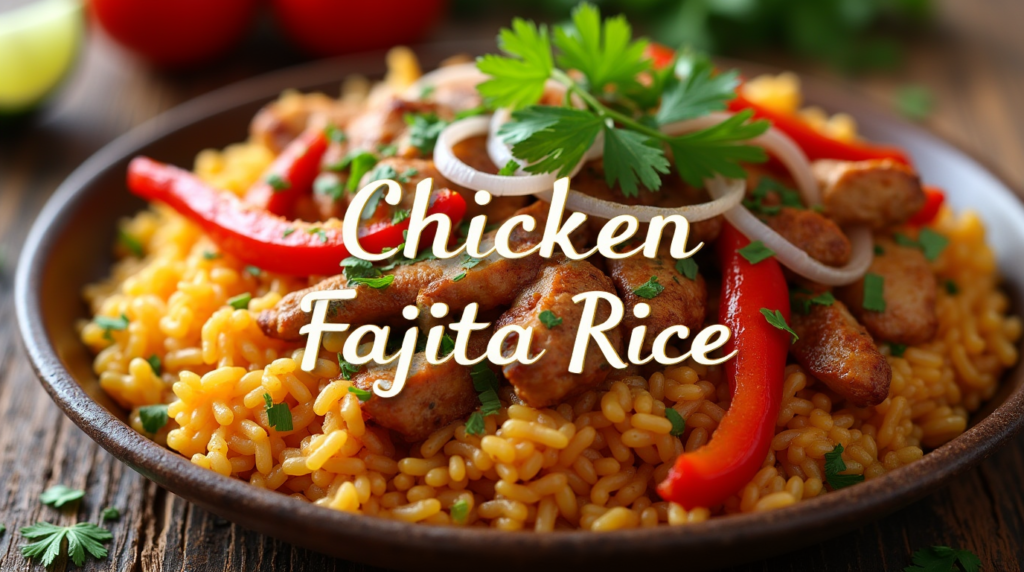
Step-by-Step Recipe for Chicken Fajita Rice
Prepping the Ingredients
Before you turn up the heat, get everything prepped and ready to roll. Trust me—mise en place (a fancy French way of saying “everything in its place”) is your best friend here.
Start by slicing the chicken into even strips—this helps everything cook at the same rate. Toss it in a bowl with lime juice, olive oil, and your spice blend. Let that marinate while you chop your veggies.
Cut your bell peppers and onions into strips that match the chicken size-wise. Not only does this make for a prettier dish, but it also ensures everything cooks evenly. If you’re using fresh garlic, mince it finely so it doesn’t burn in the pan.
Measure out your rice and broth ahead of time, too. For a richer flavor, use chicken broth instead of water when cooking the rice. Want to dial up the tomato flavor? Add a spoonful of tomato paste to the broth.
Once everything’s prepped, it’s time to bring it all together in the pan—and your kitchen is about to smell amazing.
Cooking the Chicken Just Right
Heat a large skillet or deep pan over medium-high heat with a splash of oil. Once hot, add the chicken in a single layer. Don’t stir it immediately—let it sear for a couple of minutes on each side to get that golden crust.
Depending on your pan size, you might need to cook the chicken in batches. Crowding the pan will cause the chicken to steam instead of sear, and nobody wants soggy chicken.
Once all your chicken is cooked through and beautifully browned, remove it from the pan and set it aside. You’ll add it back later, so keep it warm under a foil tent or a lid.
This step might seem simple, but it’s crucial. The fond (those browned bits at the bottom of the pan) left behind after cooking the chicken is flavor gold. Don’t wipe it out—you’ll use it to build even more depth in the next steps.
Step-by-Step Recipe for Chicken Fajita Rice
Sautéing Veggies to Perfection
Now it’s time for the vegetables to shine. In the same pan where you cooked the chicken (yes, keep those flavorful bits at the bottom!), add a bit more oil if needed and toss in your sliced onions and bell peppers.
The trick here is high heat and patience. Let the veggies sit undisturbed for the first couple of minutes to develop some char. You want those edges to brown slightly—that’s where the magic happens. Stir occasionally to avoid burning, but resist the urge to keep flipping them constantly.
After about 5 to 7 minutes, your onions should start to caramelize and the peppers should soften while retaining a slight crunch. Add minced garlic at this stage, and cook for another minute or two until fragrant.
If you’re using any extra add-ins like corn, cherry tomatoes, or black beans, now’s the time to throw them in. Cook just long enough to warm them through. Then, remove the veggie mix from the pan and set it aside with the chicken.
Pro tip: squeeze a bit of lime juice over the veggies as they finish cooking. It enhances the natural sweetness and gives a fresh contrast to the smoky flavors.
Simmering the Rice with Flavors
With the chicken and veggies out of the pan, it’s time to build the rice base. Add your dry rice directly to the pan and toast it for a minute or two. This step adds a nutty depth and helps prevent the rice from getting mushy.
Next, pour in your broth—chicken or vegetable both work great—and scrape the bottom of the pan to loosen all those delicious browned bits. If you’re using tomato paste or canned tomatoes, stir them in now. Bring everything to a gentle boil.
Once it’s bubbling, reduce the heat to low, cover the pan, and let it simmer. Cooking times will vary based on the type of rice you’re using, but for standard long-grain white rice, it’ll take about 15 to 18 minutes.
Avoid the temptation to lift the lid! Let it steam properly so the rice absorbs all the liquid and flavors. After the cooking time, remove the pan from heat but keep it covered for another 5 minutes. This resting time allows the steam to finish the job and gives you perfect, fluffy rice.
Now, gently fluff the rice with a fork and return the cooked chicken and veggies to the pan. Stir everything together, letting the residual heat warm everything through. Add a fresh sprinkle of lime juice, chopped cilantro, and maybe a touch of shredded cheese if you’re feeling indulgent.
And just like that, your one-pan Chicken Fajita Rice is ready to serve.
Tips to Elevate Your Chicken Fajita Rice
How to Keep Chicken Juicy
Dry chicken is the ultimate letdown, especially when you’ve done everything else right. To avoid this culinary tragedy, the first step is marinating. The lime juice and oil in the marinade don’t just add flavor—they help tenderize the meat and lock in moisture.
When it comes time to cook, don’t overdo it. Chicken strips cook fast—usually 4 to 5 minutes per side if cut thin. Use medium-high heat to get a good sear without drying them out. A meat thermometer is a great tool here. Chicken is done at 165°F (74°C), so pull it off the heat once you hit that temp.
Letting the chicken rest after cooking is another key step. Resting allows the juices to redistribute instead of spilling out when you cut into it. And when you finally slice or stir it back into the rice, those juices enhance the overall dish.
Also, don’t slice your chicken too early or too thin. Larger pieces retain more moisture and give a better bite. If you’re reheating leftovers, a splash of broth can bring the chicken back to life.
Balancing Spices Like a Pro
Flavor balance is everything. Too bland and the dish falls flat, too spicy and it becomes a challenge. The key is layering your spices, not dumping everything in at once. Start with the marinade—it’s the foundation. Then adjust your seasoning again once the chicken and rice come together.
Chili powder, cumin, and paprika are the holy trinity of fajita seasoning, but don’t overlook supporting players like garlic and onion powder. A pinch of sugar can help balance acidity if you’re using a lot of tomatoes or lime.
If you’re unsure about spice levels, add cayenne or hot sauce at the end rather than during cooking. This lets everyone adjust heat to their taste. A splash of lime or vinegar can also cut through richness and brighten everything up.
And remember: taste as you go. It’s the best way to make sure you end up with a dish that sings.
Making It in One Pot Without a Mess
The beauty of Chicken Fajita Rice is the one-pan convenience. But pulling it off without creating a mushy mess takes a few pro tips.
Use a wide, heavy-bottomed skillet or a deep sauté pan. This gives you enough surface area to sear the chicken and veggies without overcrowding. A cast-iron skillet works wonders here, but a good nonstick or stainless-steel pan will also do the trick.
Keep your cooking steps in order—chicken first, then veggies, then rice and liquid. Don’t rush the toasting of the rice or the deglazing of the pan; these steps are what build flavor.
Once the lid goes on, hands off! Let the rice steam and do its thing. Stirring mid-cook releases starches and can lead to gummy rice.
Cleanup is easy too—since everything happens in one pan, you’re only dealing with a single pot, a cutting board, and a few utensils. Quick to make, quick to clean. What’s not to love?
Nutritional Value and Health Benefits
Protein-Rich and Filling
Chicken Fajita Rice isn’t just tasty—it’s packed with nutritional benefits too. First and foremost, let’s talk about the protein content. Chicken is a lean source of protein, essential for building and repairing tissues, and keeping you feeling full for longer. Whether you’re trying to bulk up or maintain a healthy weight, this dish has your back.
Each serving delivers a solid dose of complete protein, especially if you’re using skinless chicken breast or thigh meat. This makes it an excellent option for athletes, fitness lovers, or anyone trying to fuel up without relying on processed foods.
But it’s not just the chicken doing the heavy lifting. Rice, especially if you go with brown rice, adds complex carbohydrates that provide long-lasting energy. These are the kind of carbs your body loves—slow-burning and satisfying.
And let’s not forget those fajita veggies. Bell peppers and onions are loaded with antioxidants, vitamins A and C, and important minerals like potassium. This combo supports immune health, helps reduce inflammation, and adds fiber to aid digestion. It’s not just a comfort dish—it’s a nutrient-packed powerhouse in disguise.
Fiber and Vitamin Boost from Veggies
We all know how hard it can be to squeeze enough veggies into your day—but Chicken Fajita Rice makes it effortless. Thanks to its generous helping of sautéed bell peppers, onions, and optional add-ins like corn, tomatoes, or black beans, this dish turns into a veggie lover’s delight.
Bell peppers are nutritional rockstars. They’re low in calories but rich in antioxidants, especially vitamin C, which boosts your immune system and supports healthy skin. The different colored peppers each bring their own strengths—green is rich in chlorophyll, red is loaded with beta-carotene, and yellow delivers lutein for eye health.
Onions, though humble, are anti-inflammatory champions. They contain compounds like quercetin that support heart health and help manage blood sugar levels. When caramelized in a bit of oil, they add both flavor and health value to the dish.
If you’re adding beans or corn, you’re getting even more fiber and plant-based protein. Black beans, in particular, are high in folate, iron, and magnesium, making this dish not only satisfying but incredibly nutrient-dense.
Customizing for Low-Carb or Gluten-Free Diets
Got dietary restrictions? No problem. Chicken Fajita Rice is one of the easiest dishes to adapt to different lifestyles without sacrificing flavor.
For a low-carb or keto-friendly version, swap out the rice for cauliflower rice. It’s light, low in calories and carbs, and still soaks up the seasoning and juices like a champ. You might miss a bit of that traditional texture, but you’ll still enjoy the same rich flavors.
Going gluten-free? You’re already in good shape. As long as you avoid pre-made seasoning packets that might contain hidden wheat or additives, this dish is naturally gluten-free. Just use whole spices and check your broth or tomato paste labels to be sure.
If you’re cutting back on dairy, skip the cheese topping and opt for a dollop of guacamole or dairy-free sour cream. You can even bulk it up with extra veggies or throw in some tofu if you want to keep it plant-forward.
Whether you’re paleo, Whole30, or just trying to eat a little cleaner, Chicken Fajita Rice can easily fit your goals with a few smart swaps.
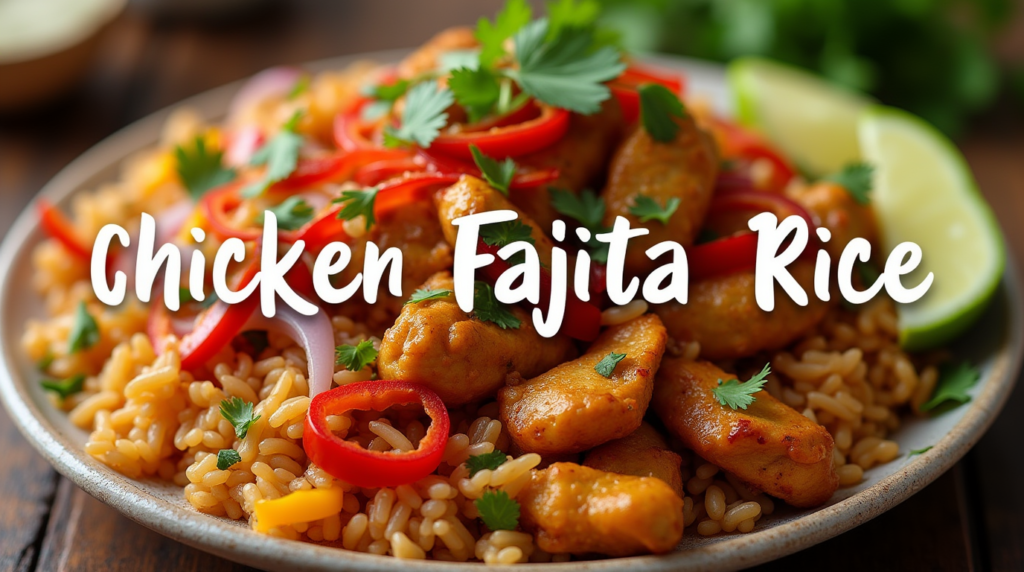
Variations and Twists on the Classic
Vegetarian and Vegan Options
Who says Chicken Fajita Rice has to be all about the meat? Going meat-free doesn’t mean sacrificing flavor. In fact, the spices, sautéed veggies, and rice do a lot of heavy lifting on their own, making this dish super easy to adapt for vegetarians and vegans.
Swap the chicken for tofu, tempeh, or seitan—all great meat alternatives that soak up marinades beautifully. Press your tofu first to remove excess moisture, then marinate it in the same spice blend used for the chicken. Sear it until golden and crispy on the outside for maximum flavor and texture.
Another great protein option is black beans or chickpeas. Not only do they add a creamy bite, but they also bring plenty of fiber and plant-based protein. Sauté them with garlic, onion, and spices before mixing them into the rice.
You can also go heavy on the veggies. Mushrooms, zucchini, eggplant, or even sweet potato cubes work wonderfully here. Their natural earthiness pairs beautifully with the bold fajita seasoning.
To keep it 100% vegan, use vegetable broth instead of chicken broth and skip any cheese or sour cream. Top with avocado slices, fresh cilantro, or a squeeze of lime for that finishing touch.
Seafood or Beef Alternatives
If you want to switch up the protein without losing the essence of the dish, there are some amazing alternatives to chicken that work just as well.
Beef fajita rice is a rich and hearty option. Use skirt steak, flank steak, or even sirloin, thinly sliced and marinated just like the chicken version. Sear quickly over high heat to keep it tender, and make sure to cut against the grain to avoid toughness.
Shrimp fajita rice is a lighter, coastal twist. Shrimp cooks incredibly fast—just 2–3 minutes per side—and pairs beautifully with lime and chili. You can even add a little garlic butter to the shrimp for a next-level flavor boost.
For pescatarians or seafood lovers, salmon is another flavorful alternative. Cube or flake it into the dish after roasting or pan-searing. Its richness contrasts nicely with the zing of the peppers and lime.
Each protein brings a different character to the dish, but the core ingredients—rice, veggies, and seasoning—make the base flexible and welcoming to all.
Tex-Mex Inspired Variants
Want to really take things up a notch? Try turning Chicken Fajita Rice into a Tex-Mex masterpiece. The flavors are already halfway there—now you just need a few extra ingredients to push it over the edge.
Mix in a can of fire-roasted tomatoes or salsa to give the rice a zesty, saucy texture. Top the whole thing with Monterey Jack or cheddar cheese, pop it under the broiler for a few minutes, and boom—you’ve got yourself a cheesy fajita rice bake.
Add-ins like jalapeños, olives, corn, or even crushed tortilla chips can add a playful twist. You can also turn the dish into burrito bowls, taco stuffers, or even use it as a base for nachos.
Tex-Mex is all about bold flavors and fun combinations, so feel free to get creative. The only rule? Make it delicious.
Serving Suggestions and Pairings
Best Sides to Serve With Chicken Fajita Rice
While Chicken Fajita Rice can absolutely shine on its own, sometimes a little something on the side rounds out the meal and makes it feel extra special. Depending on your vibe—quick weeknight dinner or a full-blown Tex-Mex feast—you’ve got tons of delicious options to pair it with.
Start with classic guacamole—creamy, tangy, and packed with healthy fats. A scoop on top of your chicken fajita rice or on the side with some crunchy tortilla chips is always a win. If guac isn’t your thing, a simple avocado salsa or even diced avocado with lime juice adds a refreshing contrast.
Mexican street corn (elote) makes a killer side too. You can grill whole corn cobs and coat them in crema, cotija cheese, chili powder, and lime for a smoky-sweet complement to the rice dish. Or, if you’re looking for something quicker, make a corn salad with lime, cilantro, and red onion.
Looking to keep it light? A crisp green salad with a lime vinaigrette works beautifully. You can also whip up a quick cucumber and tomato salad with a dash of olive oil and vinegar to keep the flavors bright and clean.
Want to go the comfort route? Serve it with warm tortillas or cheesy quesadillas on the side for scooping, dipping, or wrapping. And for those who love a bit of heat, don’t forget pickled jalapeños or a side of salsa verde for an extra punch.
Drinks That Complement the Dish
Every great meal deserves a great drink to wash it down, right? Chicken Fajita Rice pairs well with a variety of beverages—whether you’re going for boozy or booze-free.
Let’s start with the classics. You can’t go wrong with an ice-cold margarita—on the rocks, frozen, or spiced up with jalapeño. The citrusy zing pairs beautifully with the smoky spices in the rice. A paloma, made with grapefruit soda and tequila, is another refreshing option.
If beer is more your thing, reach for a Mexican lager like Corona, Modelo, or Pacifico. These are light, crisp, and perfect for cutting through the richness of the dish.
For a non-alcoholic route, go with agua fresca—think watermelon, cucumber-lime, or hibiscus (also known as “Jamaica”). These lightly sweetened, fruity drinks offer a cooling contrast to the spicy rice.
You can also keep it super simple with iced tea, sparkling water with lime, or a cold glass of lemonade. Whatever you pick, make sure it enhances the meal and keeps the vibe chill.
Make-Ahead and Storage Tips
How to Meal Prep Chicken Fajita Rice
If meal prepping is your jam, Chicken Fajita Rice will quickly become your best friend. It’s easy to make in bulk, holds up well in the fridge, and tastes just as good reheated—maybe even better after the flavors have had time to mingle.
Start by doubling the recipe and dividing it into airtight containers. You can portion it into meal-sized servings for the week ahead, or make a big batch to freeze for later. For variety, try mixing up the toppings each day—some days add cheese, others add avocado or hot sauce.
You can also prep the ingredients separately. Marinate the chicken, slice the veggies, and measure out your rice and seasonings in advance. When you’re ready to cook, it’s just a matter of throwing everything into the pan and letting it do its thing.
For lunchboxes, pack it with a lime wedge, a little container of salsa or guac, and maybe a side of tortilla chips. It’s satisfying, balanced, and super convenient.
Freezing and Reheating Without Losing Flavor
Yes, you can absolutely freeze Chicken Fajita Rice, and no, it won’t turn into a mushy mess if you do it right. Let everything cool completely before freezing, and store it in airtight, freezer-safe containers. You can also use freezer bags to save space—just lay them flat for easy stacking.
To reheat, thaw overnight in the fridge or go straight from frozen to microwave or stovetop. Add a splash of broth or water while reheating to bring back the moisture and fluff up the rice.
Microwaving? Use a damp paper towel over the container to keep the rice from drying out. If you’re reheating on the stove, use medium heat and stir occasionally to ensure even heating.
The flavors tend to intensify after freezing, so don’t be surprised if your leftovers taste even better than the day you made them. Just be careful not to overheat the chicken or it could dry out—low and slow is the name of the game.
Common Mistakes to Avoid
Overcooking Chicken or Rice
One of the most common pitfalls with Chicken Fajita Rice is overcooking—both the chicken and the rice. It’s easy to do, especially if you’re multitasking or using high heat without keeping an eye on things.
To avoid dry, tough chicken, use a thermometer to ensure you’re hitting the 165°F sweet spot. If you’re cooking chicken breast, remove it from the heat as soon as it’s done. Resting it for a few minutes before slicing will help retain those juicy, flavorful bites.
When it comes to rice, don’t rush the cooking time. Use the right liquid-to-rice ratio (typically 2:1 for white rice) and avoid peeking while it simmers. Stirring too much releases starch, which can make the rice gummy instead of fluffy.
Also, be cautious of your pan temperature. If it’s too high, you might scorch the bottom before the rice is fully cooked. If it’s too low, you’ll end up with undercooked rice and soggy vegetables.
Too Much or Too Little Spice
Another easy mistake is misjudging the spice level. Go too heavy-handed, and your dish could overpower your taste buds. Go too light, and you miss out on that signature fajita punch.
Start slow with strong spices like cayenne, chili powder, or hot sauce. You can always add more later, but you can’t take it out once it’s in. Taste as you go, and remember that lime juice, sour cream, or avocado can help mellow out excess heat.
Salt is another one to watch—especially if you’re using store-bought broth or seasoning packets. Taste before you add extra salt, or you might find your dish veering into sodium overload territory.
The best Chicken Fajita Rice finds the sweet spot between smoky, spicy, and zesty—so take your time balancing flavors. Trust your taste buds, and don’t be afraid to tweak the recipe to suit your palate.
Essential Tools to Prepare Chicken Fajita Rice
| Tool | Purpose |
|---|---|
| Large Skillet or Sauté Pan | For cooking chicken, sautéing veggies, and simmering the rice all in one. |
| Cutting Board | For safely slicing chicken and chopping vegetables. |
| Sharp Chef’s Knife | Essential for clean, easy cutting of all ingredients. |
| Measuring Cups & Spoons | To accurately measure rice, broth, and seasoning. |
| Mixing Bowl | Used to marinate the chicken or mix other ingredients. |
| Wooden Spoon or Spatula | For stirring ingredients and preventing sticking. |
| Lid or Foil | To cover the skillet while the rice simmers and cooks. |
| Tongs | Helps in flipping chicken and stirring veggies with control. |
| Citrus Juicer (Optional) | Makes extracting lime juice quick and seed-free. |
| Meat Thermometer (Optional) | Ensures chicken is cooked to safe internal temperature (165°F / 74°C). |
FAQs About Chicken Fajita Rice
1. Can I make Chicken Fajita Rice in a slow cooker or Instant Pot?
Absolutely! For a slow cooker, add all the ingredients—chicken, rice, broth, spices, and veggies—and cook on low for 4–5 hours or high for 2–3 hours. Stir occasionally if possible. For the Instant Pot, sauté the chicken and veggies first, add the rice and liquid, then pressure cook on high for 8–10 minutes with a natural release. It’s a great way to set it and forget it, especially for busy nights.
2. What’s the best way to store leftovers?
Let the dish cool completely before transferring it to airtight containers. It will stay fresh in the fridge for up to 4 days. For freezing, portion into freezer-safe bags or containers and store for up to 3 months. Reheat with a splash of broth or water to revive the flavors and moisture.
3. Can I use pre-cooked rice?
You sure can! Using pre-cooked or leftover rice can actually speed up the recipe. Just make sure to reduce the liquid by half and stir it in toward the end so it absorbs the flavors without becoming soggy. Fried rice-style Chicken Fajita Rice? Yes, please.
4. Is this recipe spicy? Can I make it mild?
The base recipe is flavorful but not overly spicy. If you’re spice-sensitive, simply skip the cayenne and reduce the chili powder. You can also opt for mild salsa, use sweet bell peppers, and balance heat with toppings like sour cream or avocado. Customizing heat levels is super easy here.
5. What are some fun toppings for Chicken Fajita Rice?
Go wild with toppings! Shredded cheese, sour cream, guacamole, salsa, jalapeños, diced tomatoes, chopped green onions, or a squeeze of fresh lime all work great. A handful of tortilla chips on the side adds a fun crunch. Toppings let everyone customize their bowl just the way they like it.
Conclusion
Chicken Fajita Rice is more than just a meal—it’s a flavor-packed, one-pan wonder that brings the joy of Tex-Mex cooking right into your kitchen. With juicy chicken, vibrant veggies, and boldly seasoned rice, it’s a satisfying dish that hits all the right notes.
Whether you’re feeding a crowd, meal prepping for the week, or just craving a hearty dinner that comes together fast, this recipe has got you covered. It’s versatile, family-friendly, and easy to adapt to fit any diet or preference.
What makes Chicken Fajita Rice a true kitchen hero? It’s simple enough for beginners, customizable for picky eaters, and delicious enough to make again and again. Plus, it’s got that wow factor with every bite—bold, smoky, zesty, and absolutely crave-worthy.
So grab your skillet, fire up the stove, and get ready to turn basic ingredients into something downright magical. Chicken Fajita Rice is calling—and it’s a call you won’t want to miss.

